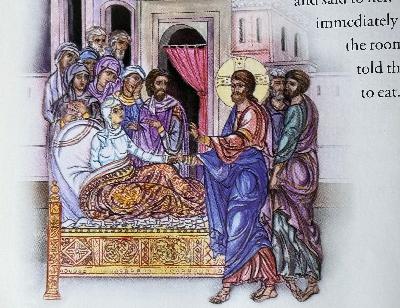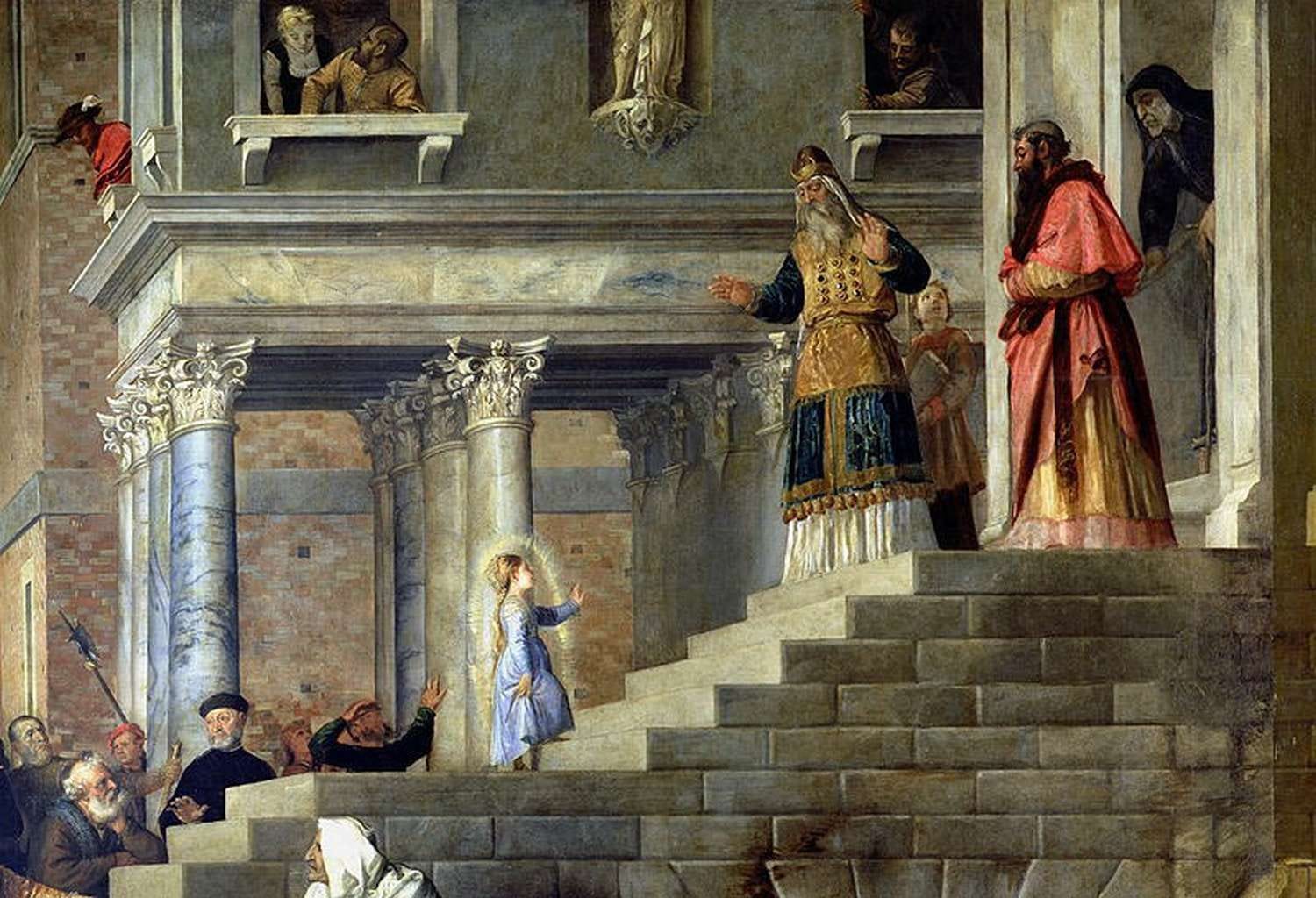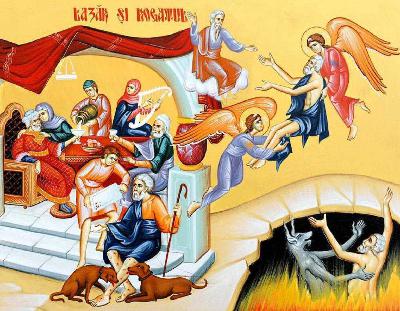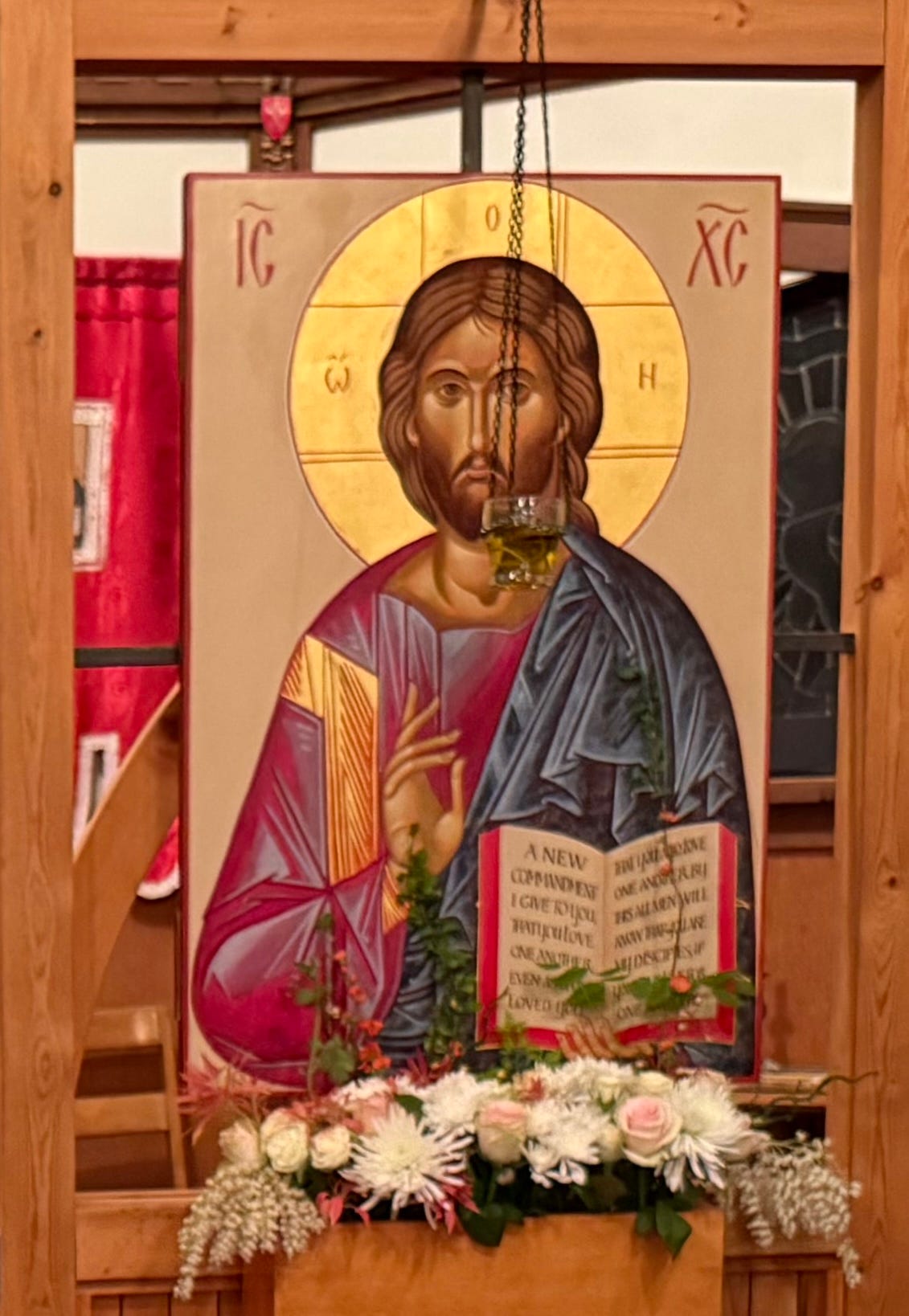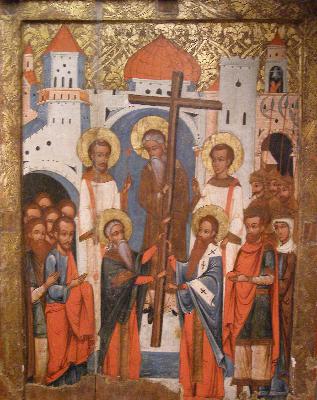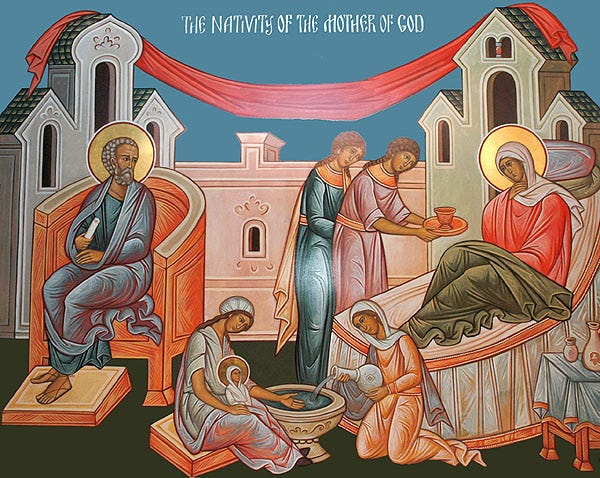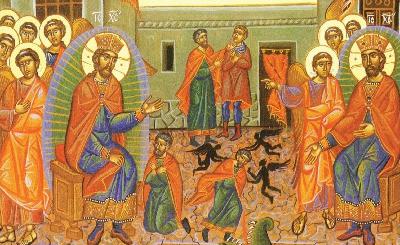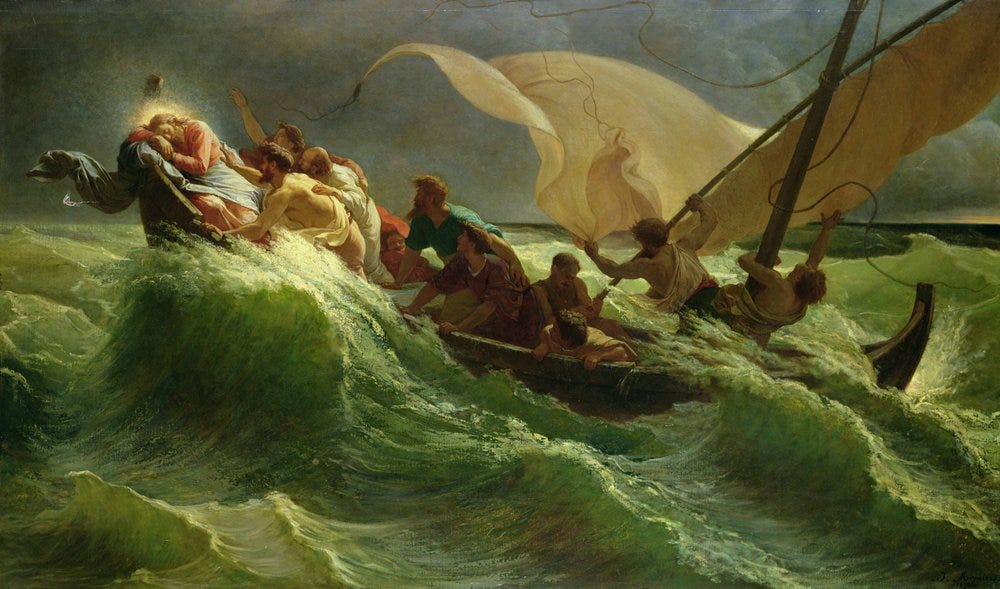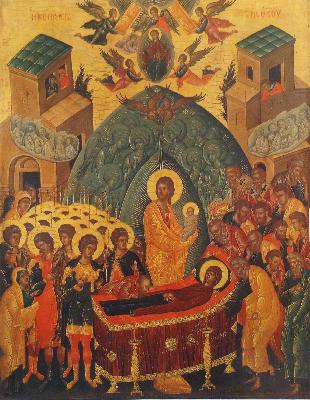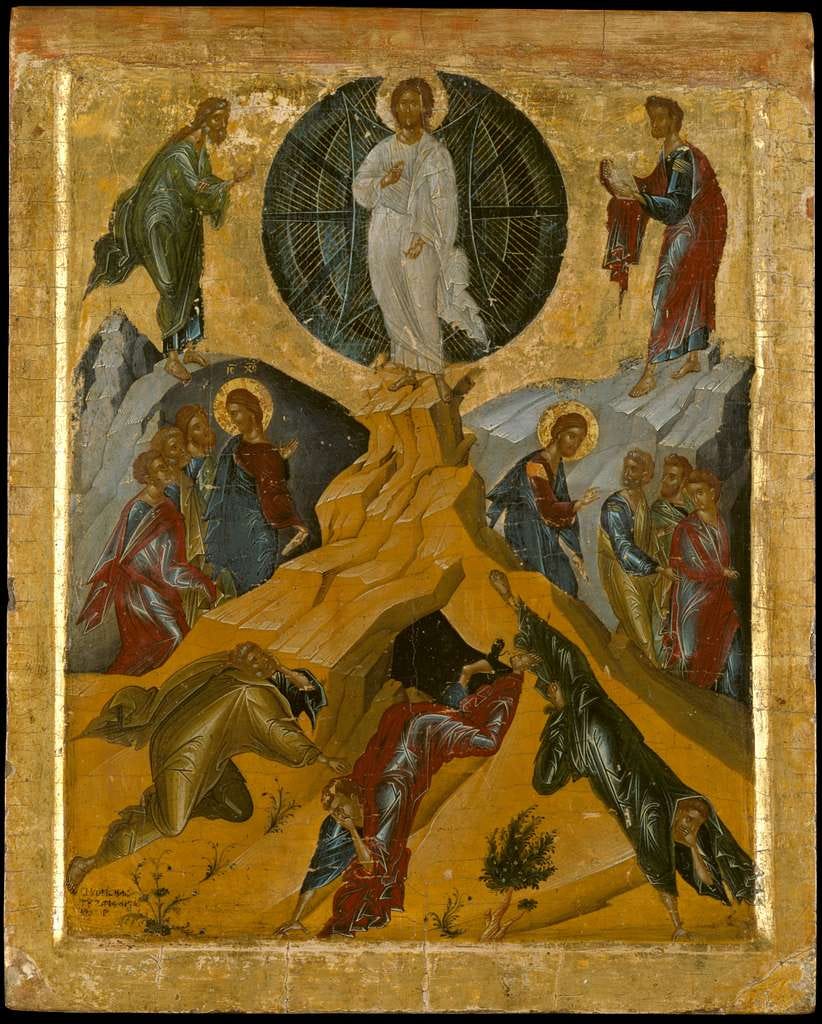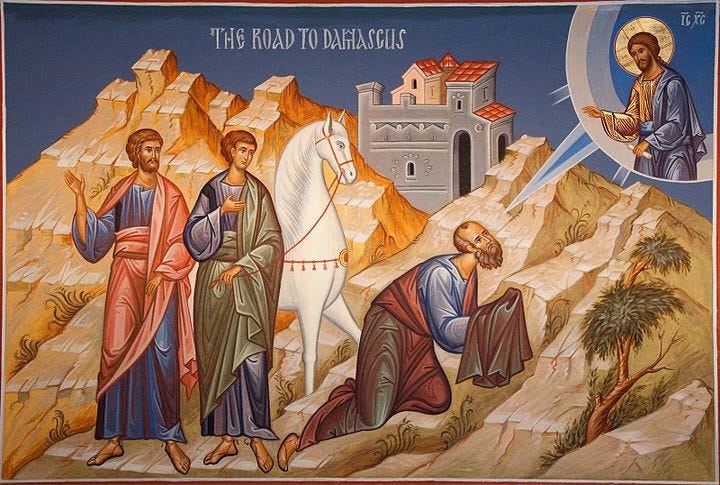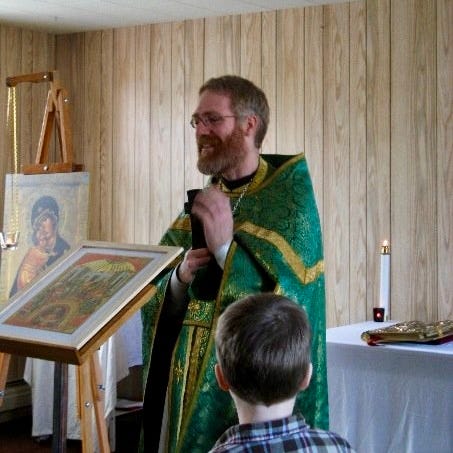Who Is This Man?
Description
So in today’s gospel reading, we get two stories for the price of one. And these intertwined stories actually are the culmination of this particular section of the Gospel of Luke, which begins with the centurion asking Jesus to heal his servant.
One of the things that runs throughout this section of the Gospel of Luke is the question, who is this man Jesus? Who is he? And as we look at this section as a whole, and in particular, at this culminating pair of stories, we begin to see exactly who he is.
So, Jesus has just gotten back from healing the Gadarene demoniac. Everybody’s really happy to see him back. And in particular, a man named Jairus, a ruler of the synagogue, is ecstatic because his daughter is dying.
And now he really needs Jesus to come and heal her. And so Jesus does, or at least he starts to try to do so. But, like everywhere he went—and you will remember from another story in this section, the raising of the widow’s son, the widow of Nain—Jesus is accompanied by a crowd. And the crowd is pressing on him from all sides. So his progress is excruciatingly slow as he’s making his way to Jairus’ house. And then it stops altogether as Jesus stops in the middle of this crowd, which is pressing on him from all sides and says, “Who touched me?”
Now, we know the story. But there’s another story in this section which has to do with someone touching Jesus.
If we go back to the central story in this section, Jesus was invited to the house of a Pharisee named Simon, and he was sitting at table, and as he’s sitting at table, eating with Simon, the Pharisee, and the company of a whole bunch of exalted guests, a woman comes off the street.
A woman of the street comes off the street, and sets herself up behind Jesus, and is really making a scene. She’s weeping, and her tears are falling on Jesus’ feet, and she’s bending down and drying off his feet with her hair, and she’s anointing his feet with fragrant ointments. And the host of the feast, Simon, who must be more than a little annoyed by this point at this scene that’s developing, is thinking to himself, If this person was really a prophet, he’d know exactly who touched the kind of person who just touched him. And he’d tell her, “Get out of here. What are you doing? This is terrible. Go away!”
Now, Jesus sees Simon’s heart, and he sees the woman’s heart, and he knows that there is an obvious communication gap here. How does he bridge it?
And so, as always, he tells a story.
“Simon, I have something to say to you.”
“Say it, Master.”
“There were two people. One owed 500 denari, and the other 50. And the master forgave both the debts. Now, which of the people, do you think, is gonna love him more? The one who owed 500, or the one who owed 50?”
And Simon answers, “Well, I guess the one who owed him more money would love him more, right?”
And Jesus says, “You’ve answered me rightly. I came into your house, and you did not anoint my head with oil, yet this woman has anointed my feet. You gave me no kiss of greeting, and yet she has not ceased to kiss my feet. I tell you, this woman, who loves much, her sins are forgiven.”
And then we get one of the many questions in this section: “Who is this man who forgives sins?”
And so this story that we’re in the middle of now, with the woman who has the flow of blood, who’s actually touched Jesus, the hem of Jesus’ garment. And Jesus knows this: He knows exactly who is touching him. Because he is a prophet, and more than a prophet. And as he stops now, he stopped for a reason.
He stopped for her. He stopped for her and for her salvation. And, of course, the disciples are all confused.
“Master. People are pressing against you on all sides. Why do you ask who touched you? There’s lots of people touching you.”
And he says, “No, I felt power go out from me.”
And so this woman then comes forward finally, and tells them, in the presence of all of them, how she touched his garment, and she was healed.
And it turns out that she’s had a flow of blood that has made her unclean for twelve years. And Luke can’t help commenting, as a physician, that she spent all her livelihood on physicians, trying to get them to help her. And none of them have been able to help her.
And now all she did was reach out, touch the hem of Jesus’ garment, and she’s healed. And Jesus says to her, “Daughter, be of good cheer. Your faith has made you well. Go in peace.”
There’s another interesting parallel here: immediately after the story of Simon, Luke makes a comment, kind of out of the blue, that there’s lots of people, and, in particular, lots of women that Jesus has helped. And that they have contributed to his and the apostles’ livelihood. They are the ones who are sponsoring Jesus and the apostles, making it possible for them to travel around.
And so what we have here, as Jesus has deliberately stopped the entire procession—brought it to a milling halt—is not simply a healing. It’s not simply that Jesus wants to get credit for this healing. It’s that there’s more that needs to be done here.
There’s more that needs to be done for the woman. Because she has been, for twelve years, an outcast from Jewish society. She’s been unclean.
Everybody knows that. It’s probably why she snuck up behind Jesus and touched his robe without telling anybody. But our Lord is not simply here to heal people.
Our Lord is here to heal relationships. And so, as he gets her to tell her story, not only do people realize who he is, realize he knows exactly who is touching him, realize ultimately that he has the power to forgive sins—but she is restored to fellowship in the community. Everybody knows the story. Everybody knows that she’s been healed.
And her livelihood, which has been, unfortunately, diverted to these physicians who are completely unable to heal her, can now be used to the glory of God.
While he’s still standing, someone comes from the ruler of the synagogue’s house. and says to the ruler, “Your daughter is dead. Do not trouble the teacher. There’s no need for him to come over. There’s no point anymore.”
But when Jesus heard it, he answered him, saying, “Do not be afraid, only believe and she will be made well.”
And there’s an interesting contrast here between this and the beginning story, where the elders of the Jews encourage Jesus to come and to heal the centurion’s servant, even though the centurion is obviously not a Jew. “He loves our nation,” they say. “He’s even built us a synagogue.”
And the centurion, of course, after asking Jesus to come and heal his servant, has second thoughts and he tells Jesus, “No, don’t come. I’m not worthy that you should enter under the roof of my house.”
This is a note of honour, in the one point, of understanding of the Jewish custom that to go into the house of a Gentile would make you unclean. But more than that, he says, “I’m not worthy for you to come. I didn’t even think myself worthy to come to you, but say the word, and my servant will be healed, for I am a man placed under authority, having soldiers under me. And I say to one, ‘Go,’ and he goes, and to another, ‘Come,’ and he comes, and to my servant, ‘Do this,’ and he does it.”
And when Jesus heard these things, he marvelled at the centurion and turned around and said to the crowd that followed him, “I say to you, I have not found such great faith, not even in Israel.”
There’s an interesting corollary here, as well, in that just before Jesus goes and heals the demon-possessed man, he and his disciples get into the boat. Jesus is tired, he falls asleep, and a big storm blows up, and the disciples get all panicky and are scared, and wake Jesus up, saying, “Master, don’t you care that we’re perishing here?”
And he arose and he rebuked the wind and the raging of the water, and they ceased. And there was a calm. He turns to them, and he says to them, “Where is your faith?”
And they were afraid, and marvelled, saying to one another, “Who can this be? He commands even the winds and the waters and they obey him.”
And so, Jesus, who he is, is being made manifest. All he has to do, as the centurion knows full well, and his disciples don’t, is speak the word. And it will happen. It will come to pass. The centurion’s servant is healed.
And the disciples, they just don’t get it. Even after seeing the great miracle of the calming of the storm, they’re still asking, “Who is he? Who can this be? He commands even the wind and the water. And they obey him.”
But now, Jairus’ daughter is dead. There’s no need to go to his house. And yet Jesus says, when he hears it, “Do not be afraid, only believe, and she will be made well.” And he continues on.
And he comes to the house. And they’re all weeping and wailing, and he doesn’t let anyone go in, except for Peter, James, and John, and the father and mother of the girl, and he tells everybody that, “Don’t worry, she’s just asleep,” and then they all laugh at him. They know she’s dead.
But this is really interesting. Because, again, just after the middle of this section, Jesus starts telling stories.
I mean, he’s told a story to Simon, but now he really starts telling stories, as we heard Father Lawrence speak last week about the parable of the sower. He tells the parable of the sower. And then he tells some more stories.
But he tells his disciples in particular, that to them is given the secrets of the kingdom of heaven, but not to everybody else, that hearing they may not hear, and so that they won’t understand yet. They’re not ready to understand. But the disciples are ready.
So try and understand here. Try and follow. And at the end of this session, when he’s telling these parables, his mother and his

